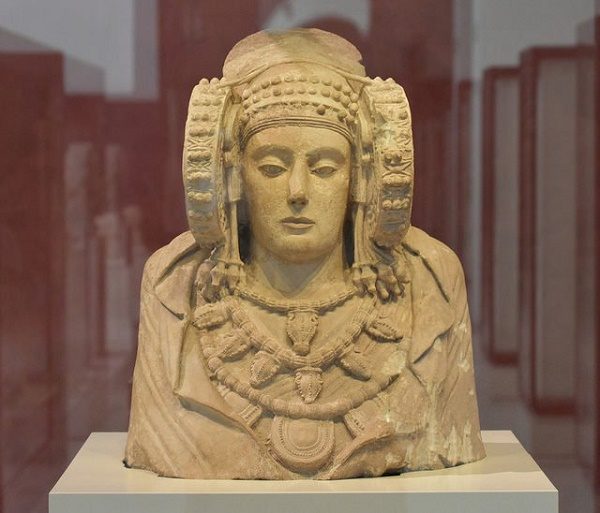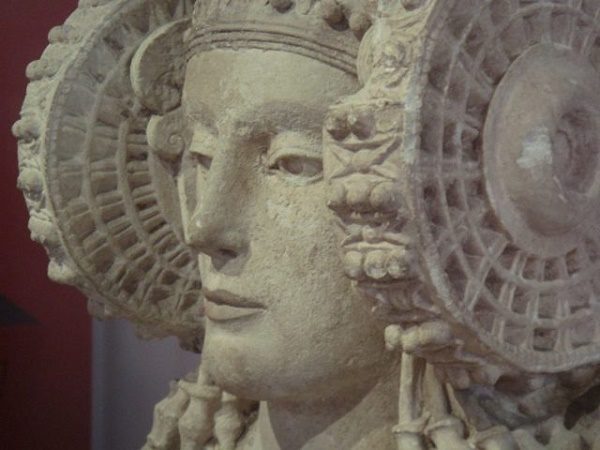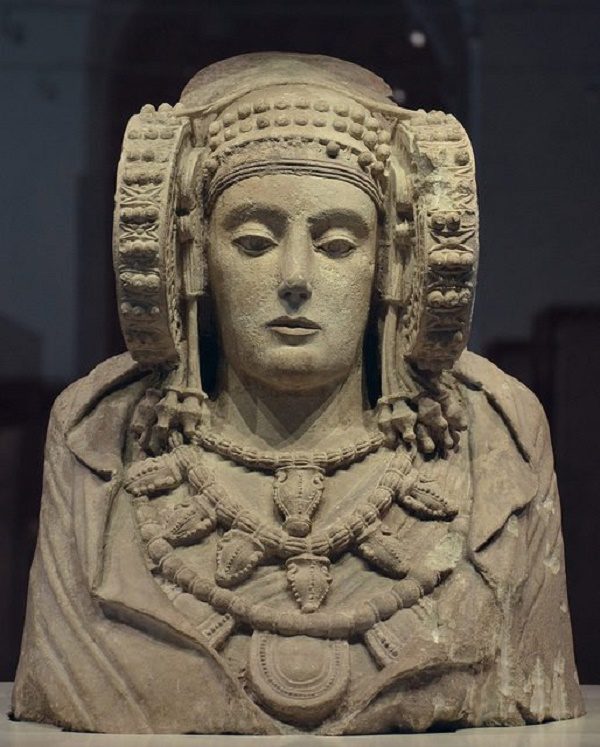Den iberiske genstand er ment at have været produceret i det 4. årh. f. Kr. selvom det håndværksmæssigt peger på stærke hellenistiske indflydelser. Det er en af de mest berømte skulpturer i verden.
Skulpturen blev fundet den 4. August 1897, af en ung arbejder, Manuel Campello Esclapez. Men en ansat ved det lokale register Pere Ibarra havde en anden version på fundet: han erklærede at en mand ved navnet Antonio Maciá, en arbejderne som ryddede den sydøstlige skråning af La Alcudia af landbrugsmæssige årsager, var den som fandt busten.
Busten er 56 centimeter høj, og den karakteriserer hovedet og skuldrene på en kvinde fra eliten. Den komplekse hoveddragt er karakteriseret af to store hjul-lignende spiraler som er kendt som "rodetes" en på hver side af hovedet og ansigtet.
Kommentar: Denne artikel er delvis oversat til dansk af sott.net fra: The Lady of Elche: a mysterious limestone bust found in 1897 on a private estate at La Alcudia, Spain
The statue was originally polychrome, or painted in vivid colors. Two of the colors have been identified by experts: classic natural vermillion and Egyptian blue.
Who she might have been continues to be a mystery. There has been speculation about whether the statue's function was as a funerary receptacle, a representation of a goddess, or an Iberian princess.
There's also debate as to whether it was created as a bust or was once part of a larger figure. Technically and stylistically it is considered to have a strong Hellenistic influence.
Shortly after the discovery, the owner of the site where it had been found sold the sculpture to Pierre Paris, a French archaeological connoisseur, who exhibited at the Louvre Museum in Paris.
After the Vichy government negotiated with Franco's government, the sculpture was placed in Museo del Prado (Madrid) on 27th June 1941. Since 1971, the Lady of Elche has been exhibited in the National Archaeological Museum of Spain in Madrid and remains one of the museum's greatest treasures.








Læserkommentarer
dig vores Nyhedsbrev